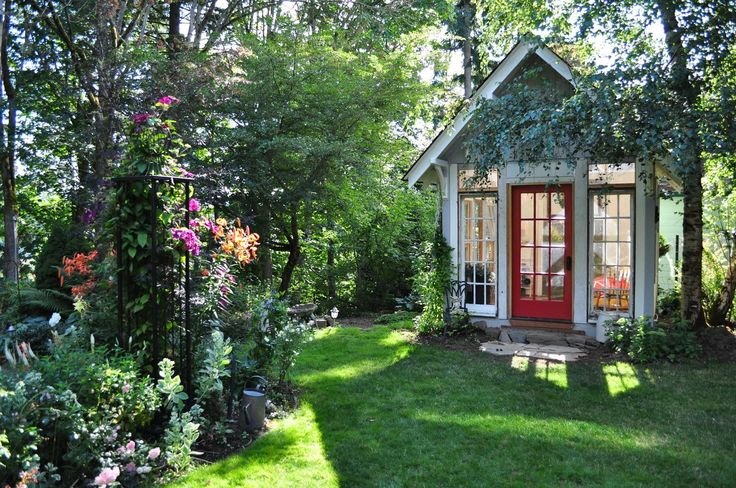Cottage Garden Design Ideas for Beginners

The cottage garden is one of the most picturesque types of garden, characterized by its charm, free planning, and numerous flowers. As they are more casual, they give the layout a very inviting and playful feel. People interested in cottage gardens may be daunted by the idea of developing a cottage garden; well, I must let you know it is not as difficult as it may seem. A cottage garden can make a little effort to make it beautiful; therefore, you should follow these simple design tips. Below are some guidelines that will be useful to any newcomer to the world of essay writing.
1. Have Both Flowers And Vegetables In Your Garden
The most characteristic feature of a cottage garden is that flowers, herbs, and vegetables can be planted in the same plot. Cottage gardens are, unlike many other gardens, formal gardens that do not need to be uniform. To start better, select a combination of perennials, annuals, and edible crops to be planted. For instance, you can place flowers such as roses, daisies, and lavender, while the herbs are rosemary and thyme. You can also include a percentage of vegetables like tomatoes, beans, lettuce, etc. The thing here is to give a notion of a wild, overabundant disorder when all elements are, in fact, closely interconnected.
2. Focus on Informal, Curving Paths
One indispensable characteristic of cottage gardens is the curvilinear and meandering garden pathway. It is advisable to avoid straight linings and centered geometric and sequential formations. Instead of consecutive pathways, natural fillers such as pebbles, stones, or wood chips are preferred when designing winding paths. These paths can provide a proper navigational flow to help visitors move within your garden as they explore the flowers. They also make your garden environment more natural and comfortable, per the cottage garden style.
3. Layering in Planting for the Complete Baffled
One of the defining characteristics of cottage gardens is how full they appear as if they have been planted in layers. To do this, plant in layers where the large or tall plants should be placed at the back, smaller plants should be placed in the middle, and the foreground should be occupied by ground-covering plants. This adds layers and depth, thus making your garden look complete and well-established. For instance, you should place plants like hollyhocks or delphiniums in the back of the garden bed since they are large, while small flowers like foxgloves or peonies should be planted in the middle of the bed and smaller flowers like the creeping thyme or violas should be planted in the front. The implication is a rich veined garden with good tones, much like an area alive with multiple emotions.
4. Choose Low-Maintenance Plants
When you are starting, you should have a few plants around your house, and ensure you go for those plants that are friendly to your climate. Some of the cottage garden favorites. Many of them are hardy and low-care once the plants are established. Other common species of plants include lavender, coneflowers, and daylilies, which are easy to grow and rarely demand much attention from their owners. Also, other plants like daisies, catmints, and yarrows are tolerant and known to reseed themselves; hence, they do not require frequent replantation. Select plants that are easy for your gardening level and do not require much attention so you can have a beautiful garden with little or no fuss.
5. Incorporate Climbing Plants
Having a proper cottage garden without climbers is impossible, as it provides height and a bit of romance. Plant climbing plants such as roses, clematis, or honeysuckles and erect trellises, arbors, or fences for support. These plants give both height and volume and the falling over the impression, which characterizes cottage garden schemes. The first-timers may opt for clematis and climbing roses since they require a less complicated method of growing and caring. Such climber plants make your flowers and structures look magical as they spread across other flowers and structures as they grow.
6. Opt for Garden Decorations Made from Recycled or Second-Hand Material
A cottage garden could contain used or old items in the garden in order to give a fairy tale look. Other accessories, such as wooden benches that have not been painted for years, pots with signs of rust, or general garden equipment such as shovels, bring the garden’s character into perspective. Recycling also means using old containers, cans, or other items as plant containers or ornamental items. For instance, using an old and repurposed watering can with flowers or an old wooden wheelbarrow used as a gardening container will help bring life to your garden. The idea is to design and decorate your home so that they narrowly assume the appearance of a home and feature things that are special to you.
7. All in all, let your garden grow naturally
In practice, One of the main perks of a cottage garden is its carefree air, whether classical or domestic. Do not over-prune or attempt to develop over-processed landscapes because this is an unattractive trait. On the other hand, let your plants grow naturally to allow for some of them to be sited very close to each other. Annuals such as foxgloves, wild poppies, or cosmos reseed themselves and will pepper your garden further, contributing to that bounty. Apart from that, it takes time, and it permits your garden to grow naturally without human interference. Do not mind that this type of garden, cottage, looks rather wild, and it is considered entirely appropriate.
8. Create Cozy Seating Areas
Cottage gardens are meant to be used, so it is necessary to set up comfortable furniture where people can lie down and appreciate the garden’s charm. A cozy bench, two chairs, or even a swing item are enough to have a perfect coffee break or even a good afternoon surrounded by flowers. You can also create an impression on your visitors by strategically placing your seating area among the plants. This can be developed with some soft cushions or a table with a country furniture style.
Conclusion
It is easy to begin a cottage garden, and it is an excellent type of garden for the novice. It is possible to achieve a lot when gardening by accepting different kinds of plants, adopting an informal design, and including an individual touch to your gardening. Consider planting low-maintenance flowers, construct winding paths that do not look too neat, and allow the plants to self-sow for an appearance of uncertainty. By incorporating these tips, you will be in a position to have an elegantly beautiful cottage garden that will last you many years.
To read more about Essential Gardening Tips for Beginners and Experts. click here. .



